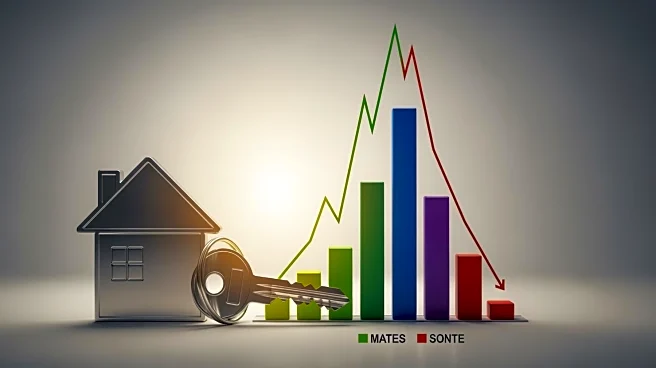What's Happening?
The real estate market in New Hampshire is experiencing a shift as the number of offers on properties decreases, indicating a softening seller's market. Despite high demand and limited inventory, the Manchester/Nashua
metro area was designated as the 'Hottest Real Estate Market' in the country by the Wall Street Journal/Realtor.com Housing Market Ranking. The median home price in New Hampshire was $550,000 in August, with Rockingham County seeing higher prices at $689,000. Realtors report fewer offers on high-end homes, with buyers taking more time to make decisions. The Federal Reserve's recent interest rate cut may impact the market, but its effects are yet to be fully realized.
Why It's Important?
The softening of New Hampshire's real estate market reflects broader trends in the U.S. housing sector, where high prices and changing buyer behaviors are influencing market dynamics. The decrease in offers suggests potential challenges for sellers, while buyers may benefit from more negotiating power. The Federal Reserve's interest rate cut could further impact the market by making borrowing more affordable, potentially increasing buyer activity. However, the high cost of homes continues to drive families to consider alternative living arrangements, such as moving back home, affecting societal norms and housing demand.
What's Next?
As the market adjusts to the Federal Reserve's interest rate changes, realtors and brokers anticipate potential shifts in buyer activity and housing prices. The 'lock-in' effect, where homeowners with favorable interest rates are disincentivized to sell, may continue to influence inventory levels. Realtors expect more inventory and lower high-end prices, which could attract different buyer demographics. The ongoing demand for quality of life components in New Hampshire may sustain interest in the region, despite market fluctuations.
Beyond the Headlines
The real estate market's softening highlights the impact of economic factors on housing affordability and societal trends. The high cost of homes is driving changes in living arrangements, with more young adults staying with family longer. This shift may affect community dynamics and local economies, as well as the availability of affordable housing for essential workers. The market's evolution underscores the need for strategic planning and policy adjustments to address housing affordability and accessibility.











